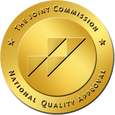1 Comment
By: Constance Scharff Ph.D. - Posted Apr 21, 2016
By: John Lavitt - 7/15/2016
The Diagnostic and Statistical Manual of Mental Disorders, Fifth Addition (2013), DSM-5, describes substance use disorders as a set of cognitive, behavioral, and physiological symptoms with an underlying change in brain circuits that may be maintained beyond the period of detoxification. These changes in the brain may result in repeated relapses and intense cravings that are tied to exposure to drug-related stimuli. The DSM-5 also indicates that the impact of the substance abuse can be persistent, requiring long-term approaches to treatment. Substance use disorders are diagnosed based on the presence of pathological patterns of behavior that result from the use of the substance, including:
Impaired control over the use of substances
Social impairment
Risky use
Pharmacological
As a result of the use and abuse of drugs or alcohol, the life of an addict can feel chaotic, out of control and overwhelming. Decisions are made as reactions, impulsively and with extreme behavioral responses. There is little to no moderation or regulation of behavior or emotion, and the person struggling with addiction will engage in unhealthy behaviors to seek pleasure or escape discomfort. These impulsive and compulsive behaviors will occur regardless of their consistently negative outcomes. As the disease of addiction has such a devastating and persistent affect on a person’s life, overcoming addiction requires intensive, ongoing intervention, often including a residential treatment component. While in a residential treatment program, a patient is provided with the opportunity to escape from external factors that contribute to, and trigger, the unhealthy thoughts, feelings and behaviors that drive addiction. Within this controlled and structured environment, the patient is exposed to healthy strategies for coping and living in sobriety. In the process, he or she is taught to recognize the internal and external experiences that drive the desire to use the addictive behaviors, while learning and practicing the skills and tools that may help manage high-risk situations. The person will learn and practice behavioral, cognitive and affective coping skills, while insulated from the triggers within the community, with immediate access to therapeutic resources. While residential treatment provides an opportunity for patients to maintain abstinence as they learn and practice the use of healthy coping skills and tools that can support a sober lifestyle, the transition back out into the community often leaves the patients vulnerable to falling back into unhealthy thought and behavior patterns that maintain addiction. In a study conducted with chronic opioid dependent patients transitioning from inpatient care to outpatient treatment, after 90 days from the time of discharge, only 22% of the patient remained in aftercare treatment and less than 3% were verifiably abstinent from opioid use (Davison, Sweeney, Bush, Correale, Calsyn, Reoux, Sloan, & Kiviahan, 2006). This lack of follow through with outpatient treatment and the high potential for relapse (Gerhardt, Breitschwerdt, & Thomas, 2015; Nordfjaern, 2011) are a distinct reality of the transition from more restrictive to less restrictive levels of care. These early stages of recovery are a time of significant vulnerability for patients in recovery, and there is a significant need for consistent support to help them maintain sobriety. In fact, research suggests that patients do not begin to experience the benefits of treatment until they have received approximately three months of care, and that patients should engage in six to twelve months of non-residential treatment in order to make stable gains (Kellogg & Tatarsky, 2012). Relapse may be understood as the process by which a person in recovery engages in the unhealthy cognitive, social and behavioral patterns that existed prior to treatment, and potentially leads to a return to active use of drugs or alcohol. It is often the result of a combination of personal, family, social or treatment related factors, including:
The susceptibility to relapse, along with the recognition of addiction as a brain based, chronic condition is resulting in an increased awareness of the need to move away from treating addiction with acute intervention practices and to utilize a longer-term treatment model with seamless transitions to levels of care that are consistent with the severity of the patient’s condition (Tamasi, 2015); but our medical system has not adjusted to support this need. Our system of care continues to treat substance use disorders as acute conditions, with time-limited interventions and a push for rapid discharge. In addition, the transitions from one level of care to the next are often disjointed and inefficient. As a result, treatment often falls short of meeting patient needs and risk of relapse is elevated. Adjustments need to be made within the treatment system to more effectively support our patients in the earlier stages of recovery, when they are most vulnerable and in need of stronger supports. In part, the responsibility for improving the process of treatment transitions falls on the residential and inpatient treatment programs. As the immediate re-exposure to ongoing unhealthy life circumstances (e.g. exposure to drug availability, peers and family that may not support sober living, interpersonal conflict, unstructured time) may play a significant role in the process of relapse (Jason, Davis & Ferrari, 2007), programs must have a solid understanding of the risks patients will face once the shift to community based treatment occurs. This knowledge may be used to more effectively support the patients’ needs as they move into lower levels of care with less structure and active support. While most of these programs incorporate planning for life after residential treatment, the lack of structure and readily available support that are provided within residential treatment, leaves even the most highly motivated patients vulnerable to relapse following discharge from treatment. As such, it is essential that patients transition into environments that support sobriety and offer readily available resources that may be accessed when a patient feels vulnerable or at risk of relapse. This need can be supported with effective discharge planning and care coordination focused on the home and work environments, support systems, and outpatient treatment. Home and Work Environments The home environment should be evaluated with patients, prior to discharge, exploring the risks associated with the return home and to evaluate how the patient may function in a healthy way after discharge. If the risks are determined to be beyond the patient’s ability to manage, alternative arrangements might be considered. It may be of benefit for the patient to enter into a sober living home to ensure a drug-free environment is maintained and tools are in place to reinforce personal accountability to stay sober. If these resources are not feasible or available to the patient, programs may help him or her identify alternative resources that might support access to and maintenance of a sober living environment. Interpersonal dynamics should also be considered prior to discharge, evaluating whether or not the family is able to provide the support needed to ensure the patient is able to maintain a sober lifestyle. It may be determined that the family would benefit from additional support as they adjust to having the patient back in the home. Ongoing supports, such as individual or family counseling and community based support groups (i.e. Alanon), may be of significant value to families as they struggle to overcome the damage done by the addiction, and to provide tools and skills for maintaining healthy relationships with a family member in recovery. The use of these resources should be encouraged while the patient is in residential treatment, in order to ensure that the family system has time to heal (as much as possible) prior to discharge and that they all have support once the patient returns home. Another factor that may be considered is the significance of establishing a balanced lifestyle once the patient has returned home. Establishing a healthy lifestyle can play an important role in managing stress and helping patients avoid the risk of relapse (Jackson, 2014). Establishing a schedule with patients, prior to discharge, that incorporates exercise, work, treatment, recreation, and attendance of support groups, may be of value. Patients need to be encouraged to develop positive habits in place of the unhealthy behavior patterns that they utilized prior to entering treatment. Support System Recovery in isolation does not offer a recipe for success, especially in early recovery. In order to maintain sobriety and recovery, patients will need a solid support system once they have left residential treatment. They cannot return to a network of friends who have maintained a lifestyle that revolves around the use of drugs or alcohol. Instead, these patients will need to establish a social group that is supportive of sobriety. Patients may choose to look toward the recovery community, those people who are actively working to maintain their own sobriety and support the sobriety of others, connecting through community based support groups such as AA or NA. Other resources (i.e. personal recovery coaches, sponsors, employers, personal friends, etc.) may be explored with patients prior to discharge to help establish a support system that would be available when they need to reach out for help. Outpatient Treatment The coordination of outpatient treatment is another component of care transitions that is essential in supporting patient recovery. As these early stages of recovery are a time of substantial risk, and patients are returning to the stressors and life events that were associated with their use of drugs or alcohol, it is of significant importance that the patients have access to therapeutic support as soon as possible following discharge from residential or inpatient treatment. In order to effectively and efficiently ensure the availability of these supports, residential programs should strive to discharge patients with appointments prescheduled for admission to outpatient programs, preferably with an intake occurring on the same day of discharge from treatment. This expedited transition may help to reduce risk of relapse. When establishing outpatient treatment for the patient, the residential provider may take additional steps to support a more effective transition. When establishing outpatient treatment, the residential provider should also consider any additional clinical needs, such as co-occurring psychiatric or medical conditions, and be sure to make appointments with providers best suited to meet these needs. They should also reach out to the new treatment providers to ensure that they are informed of the patient’s clinical condition in order to offer support that will best meet patient needs. Another tool that may be useful in helping patients effectively transition to outpatient treatment is to call and email the patients to remind them of scheduled appointments and to follow up after the appointments to confirm that the patient made the appointment. It may also be of benefit to intervene with the patient prior to discharge. A program in the UK found that a single motivational therapy session, prior to discharge, led to an almost 50% increase in the show rate for an initial outpatient appointment (Jackson, 2014). Conclusion Recovery can be a daunting and overwhelming process, demanding consistent and sufficient resources to ensure the best opportunity for success and sobriety. In this process, treatment providers are in a unique position to provide direct support when patients are with them, but their responsibilities do not end when patients discharge. The commitment to support patient success and wellbeing is maintained as patients move between higher and lower levels of care. There is an obligation to ensure that patients are not left without resources and support once they leave residential care. It has been well established that this transition period is a time of vulnerability with significant risk of relapse. As such, residential treatment providers must ensure that every effort is made to create a smooth and effective transition with resources and support systems prepared and established prior to discharge. References American Psychiatric Association (2013). The Diagnostic and Statistical Manual of Mental Disorders, Fifth Addition. American Psychiatric Association: Arlington, VA Davison, J. W., Sweeney, M. L., Bush, K. R., Correale, T. M. D., Calsyn, D. A., Reoux, J. P., Sloan, K. L. & Kiviahan, D. R. (2006). Outpatient treatment engagement and abstinence rates following inpatient opioid detoxification. Journal of Addictive Diseases 25(4) 27-35 Gerhardt, U., Breitschwerdt, R. & Thomas, O. (2015). Relapse prevention in drug addiction: addressing a messy problem by IS action research. AI and Society 30(1) 31-43 Jackson, B. R. (2014). An overview of the relapse prevention (RP) model. Journal of Addictive Disorders. Retrieved October 14, 2015 from Breining Institute at http://www.breining.edu Jason, L. A., Davis, M. I., & Ferrari, J. R. (2007). The need for substance abuse after-care: longitudinal analysis of oxford house. Addictive Behaviors 32 803-818 Kellogg, S.H. & Tatarsky, A. (2012). Re-envisioning addiction treatment: a six point plan. Alcoholism Treatment Quarterly 30(1) 109-128 Nordfjaern, T (2011). Relapse patterns among patients with substance use disorders. Journal of Substance Use 16(4) 313-329 Substance Abuse and Mental Health Services Administration (2013). National Survey on Drug Use and Health: Overview of Findings. Available at: http://www.samhsa.gov/data/sites/default/files/NSDUH-SR200-RecoveryMonth-2014/NSDUH-SR200-RecoveryMonth-2014.htm Tamasi, R. V. (2015). Why we must redefine addiction treatment. Behavioral Healthcare 34(3) 21-23 |
Insurance Providers we honor:
|
|
|
We honor many more insurance providers than listed on our website - We are often able to negotiate benefits with most insurance providers.
Mark of Excellence Behavioral Health Care !!
© 2022 Hillside Laguna Beach, LLC. Substance Abuse Treatment & Recovery Centers |








 RSS Feed
RSS Feed
